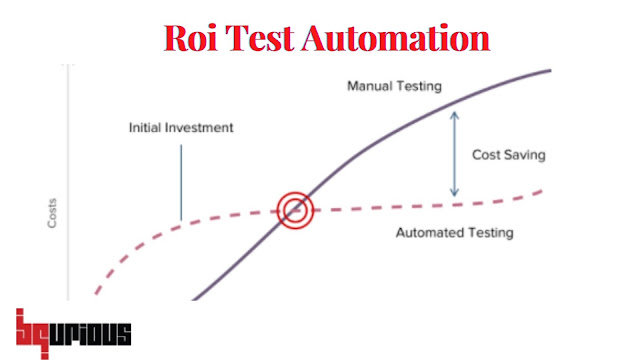Salesforce Test Automation Practices
Salesforce is an amazing product. However, even the best tools can be improved. One area that needs improvement is test automation. It is often overlooked in digital transformation. Here are some Salesforce best practices for test automation.
Common Salesforce Test Automation Challenges:
Salesforce is an easy-to-use, customizable platform. Salesforce has over 150,000 customers around the world. Companies will most likely encounter some common problems when implementing testing automation.
Lightning vs Classic Salesforce mismatch: There are many differences in Classic Salesforce and Lightning. Tests may not perform as expected if there are slight differences between the versions.
Salesforce integrates apps and programs. It is only one component of your business software ecosystem. Some testing software is not compatible with Salesforce. You will need to test the other segments separately.
software regression testing
salesforce test automation
salesforce automation testing tools
salesforce manual testing
salesforce testing automation
salesforce automation testing
salesforce testing
salesforce test automation
salesforce automation testing
salesforce test automation
salesforce automation testing tools
salesforce manual testing
salesforce testing automation
salesforce automation testing
Salesforce offers regular updates: Salesforce is an innovative company that releases many new features and updates. This is great for users but not for testing. To continue performing in the face new releases, testing must adapt to them.
Non-linear processes: Testing relies heavily on linear processes. For example, "The user does A, and this leads to B." Salesforce offers many ways to reach the same endpoint. It is important to understand these processes and how they work in order to test in every scenario.
salesforce testing
salesforce test automation
salesforce automation testing
automated regression testing
salesforce test automation
salesforce automation testing
salesforce testing
salesforce testing automation
salesforce testing
software regression testing
regression testing
regression test
automated regression testing
software regression testing
regression testing
regression test
automated regression testing
Complexity: While automation is great when it runs, ramp-up can prove difficult. Many solutions available on the market require technical skills to set up initial tests, and then to maintain them as the platform evolves.
These issues could prevent your Salesforce automation from performing at its best. You'll get better results if you follow best practices.
regression testing
automated regression testing
salesforce testing
salesforce testing automation
salesforce testing
salesforce automation testing
salesforce test automation
salesforce testing automation
Cross browser compatibility
Cross browser compatibility issues
Cross browser compatibility
automated regression testing
regression testing
automated regression testing
automated regression testing
regression testing
automated regression testing
automated regression testing
salesforce testing
salesforce testing automation
salesforce testing
salesforce automation testing
5 Salesforce Test Automation Best Practices:
Salesforce automation best practices will help you choose the right solutions and set up your system accordingly. These are five things to consider.
#1: Make sure you are a good candidate for Salesforce test automation
Automation is not for everyone. Sometimes, test automation is more work than it's worthwhile. A viable automation candidate needs repeatable, predictable processes. These processes must also be repeated often enough to make automation worthwhile. Automation is best for high volume, repeatable, and predictable actions.
salesforce test automation
automated regression testing
regression testing
automated regression testing
automated regression testing
regression testing
automated regression testing
automated regression testing
regression testing
salesforce testing
salesforce testing automation
salesforce automation testing
salesforce testing
salesforce test automation
salesforce testing
salesforce testing automation
salesforce automation testing
automated regression testing
test automation best practices
test automation best practices
test automation best practices
test automation best practices
test automation best practices
test automation best practices
test automation best practices
test automation best practices
#2: Complete a value stream map
A value stream map documents the process flow. The steps are put into a visual aid to help you follow the journey. This allows you to overcome problems where users might take a different route to reach a solution. These flows can be used to create tests and eliminate bottlenecks.
#3: Use an agile approach
Salesforce is a dynamic platform so you need to adapt your team accordingly. Although this may seem paradoxical given the importance of automation, manual testing still matters. Manual testing is still important, especially for things like beta/alpha testing. Agile means you aren't tied to any one solution. Your team can use all of them because they are flexible.
smoke vs sanity testing
smoke testing and sanity testing
sanity testing and smoke testing
sanity testing
smoke vs sanity testing
smoke vs sanity testing
smoke testing and sanity testing
test automation best practices
test automation best practices
mobile automation testing
mobile testing
mobile app testing
mobile app automation testing
mobile app automation
mobile automation testing
mobile automation
mobile app automation testing
mobile automation testing
mobile testing
mobile app testing
mobile app automation testing
mobile app automation
mobile automation testing
mobile automation
mobile app automation testing
mobile automation testing
mobile testing
mobile app testing
#4: Use a low-code option
Selenium is a great tool for automation but there's a catch. These tools require extensive expertise. Like software, testing is dynamic. Low code allows non-technical users to create their own Salesforce test. This allows you to increase the skills of your testing team by lowering entry barriers.
#5: A system-agnostic approach is recommended
Salesforce is a powerful tool. But it's not the only one. There are many programs that can be used to build your digital infrastructure. You can test business processes inside Salesforce using a program that lets you switch between platforms, apps, and clouds.
Salesforce test automation best practices allow you to take full advantage Salesforce's customizability, without being bogged down with manual testing or glitches. It is possible to verify and guarantee the effectiveness of platform-specific solutions. Test automation is required to support Salesforce.
mobile app automation testing
mobile app automation
mobile automation testing
mobile automation
Cross browser compatibility
Cross browser compatibility
Cross browser compatibility
salesforce test automation
salesforce testing automation
salesforce testing
salesforce automation testing
salesforce test automation
salesforce testing
smoke vs sanity testing
test automation best practices
test automation best practices
test automation best practices
test automation best practices
test automation best practices
codeless automated testing
codeless automated testing
codeless automated testing
codeless automated testing
codeless automated testing
regression testing
regression testing
automated regression testing
regression testing
regression testing
automated regression testing
regression testing
regression testing
salesforce testing
salesforce automation testing
salesforce automation testing
salesforce test automation
salesforce testing




Comments
Post a Comment